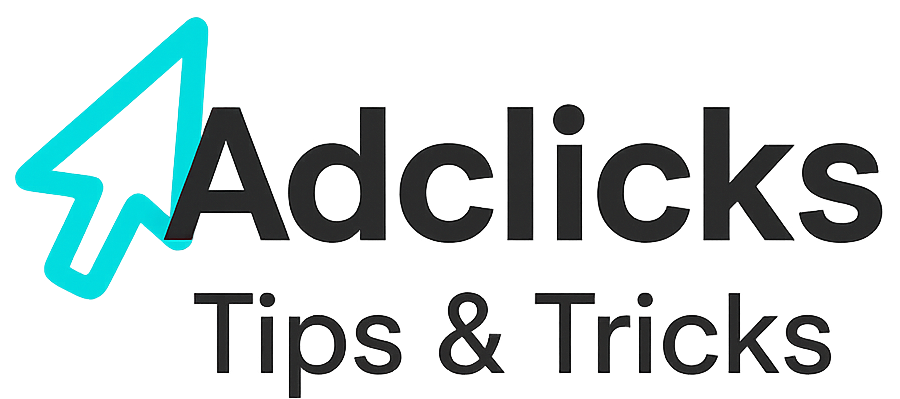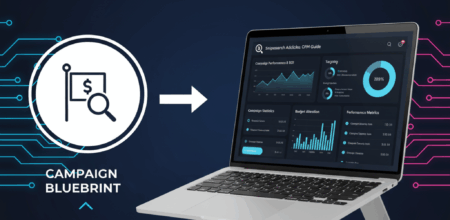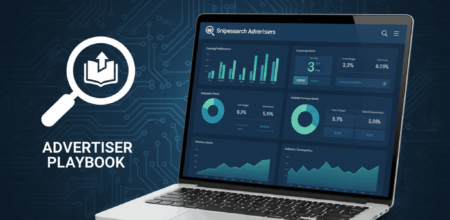What Flickr Actually Is—and Why It Still Sends Readers
Flickr is a photography community first, a social network second. It’s built around public photo pages, albums, groups, and a modernized “About” profile that showcases who you are and where else people can find you. The key for publishers is simple and verifiable: Flickr supports outbound links in multiple surfaces, which means you can meet audiences in their native photo context and invite them to a deeper read on your site—legitimately and without hacks.
Most photo-led platforms restrict linking to paid placements or a single bio field. Flickr is different. You can hyperlink in photo descriptions and comments using raw URLs or basic anchor tags, and the profile “About” experience includes fields for websites and social destinations. The parsing is HTML-sanitized and often marked nofollow, but links are live and clickable on desktop and widely supported on mobile. That alone makes Flickr unusually useful for driving qualified readers to reporting, explainers, behind-the-scenes pieces, and archives.
When that click happens, you want the page they reach to reward the curiosity that the image created. This is where Adclicks belongs: not as the story, but as the quiet monetization layer on a fast, proof-first article. If you give a photographer or visual culture fan the evidence, dates, sources, and context they came for, they read; if you serve pop-ups and filler, they bounce. Adclicks pays you for depth, not noise.
What the Audience Looks Like (and Why It Matters)
The public picture of Flickr’s audience is steady across sources: a majority male skew, strongest in the 25–34 cohort, with significant reach in the U.S., U.K., Germany, France, Canada, and a long tail elsewhere. Photography lovers, archivists, photojournalists, designers, educators, and hobbyists all show up, and they arrive with intent—searching, cataloguing, tagging, and annotating rather than passive scrolling. Treat any single metric set as directional, but the shape is consistent enough for planning.
For reach in the EU, Flickr discloses a few hundred thousand average monthly active users under the Digital Services Act; globally, third-party panels show tens of millions of monthly visits across the core domain and image CDN. The EU disclosure underlines regional scale for compliance; traffic panels explain the global canvas. Together they say: Flickr isn’t a mass-market short-video app, but its users are concentrated, motivated, and discover content through search and group activity—perfect for publishers with explainers, visual history, how-tos, and attribution-first stories.
When those readers click out, they respond to pages that behave like field notes—clear subject, fast proof, and a next step that goes deeper into the same thread. That’s where Adclicks thrives: calm placements in the flow of the read, not in the reader’s way.
Culture: Crediting, Linking Back, and Playing By the House Rules
Flickr’s culture is credit-centric. The platform’s own guidance stresses linking back when content is embedded or shared elsewhere, and the help center repeatedly orients users toward proper attribution. Community norms punish spammy self-promotion, but reward sources, process notes, and thoughtful context. If your profile and descriptions read like you’re doing the work—naming the camera, the archive, the location, the date—people click through to see the longer story.
Outbound links are allowed, but they’re not a free-for-all. Flickr parses raw URLs in descriptions and comments, converts them to clickable links, and allows simple <a href> formatting; older threads note that desktop supports linking more consistently than some app surfaces, and that links may be marked nofollow. That’s not a penalty; it’s a signal: links are for humans here, not SEO manipulation. Compose for readers, not crawlers.
Once that human arrives, don’t flip the script. Adclicks should sit where the reader naturally pauses: between a hero image and the first evidence block, or after a caption set as you move from visuals to reporting. You’re not selling the click; you’re using it well.
The Surfaces That Actually Link Out (And How To Use Them)
There are three surfaces that matter for publishers. First is the photo description. This is where you put the short, literal bridge from an image to the fuller piece: the shoot, the restoration, the event, the data behind the picture. Keep the first two lines descriptive, then place a single, clean link with a noun phrase (“full restoration notes,” “interview transcript,” “dataset and method”). Flickr will render a clickable link; HTML anchors are supported; encoding tricky characters avoids breakage.
Second is the comment thread on a photo or in groups. Use this for follow-up references people ask for. If someone requests dates, sources, or a map, answer in-thread and add one link. Don’t carpet-link multiple times; the thread keeps your context persistent, and one good reference outperforms five promotional drops. Simple is credible on Flickr.
Third is the About page. The redesigned profile supports website and social fields. It’s not where you post every article; it’s where you list a canonical site and a minimal set of destinations so users who like your stream can find your domain later. Think of it as the stable root of the relationship. On your site, Adclicks catches that returning traffic with predictable viewability because those users browse more pages per visit than one-off searchers.
What Kinds of Publishers Fit
Photo-led journalism, visual culture magazines, restoration and conservation blogs, city history sites, museum and archive partners, design education publishers, and technical how-to outlets slot perfectly into Flickr’s culture. The more your work respects metadata, provenance, and process, the better you’ll do. If your site covers public art, architecture, transport, environment, festivals, and local reporting with original imagery, the platform can become a meaningful, steady referral stream rather than a flash of attention.
This fit is about editorial posture. If your pages are built to answer “what is this image, exactly, and what’s the primary source?”, you’ll win. If your template puts a full-screen interstitial between a reader and the caption they came for, you’ll lose. When a Flickr reader lands on your page, give them a caption that expands, a facts table that verifies, and a paragraph that explains the why. Adclicks belongs just after that proof, not above it.
A Linking Strategy That Feels Native (Not Promotional)
Treat every outbound link as an annotation. In a description, write the scene as if you’re handing your notebook to a colleague: location, date, context, then “full notes here” leading to the article that shows the work. That’s the tone that earns clicks. In groups, behave as a participant—share one link when the group rules allow, then return value without links for a while. People remember patterns, and a restrained rhythm builds your reputation fast.
Consistency beats bursts. Upload in small, regular sets; write accurate tags; place one link per photo where it makes sense rather than burying five links in one upload and going silent for a month. The stream is a long game. On your domain, make sure the landing article delivers in the first screen: a larger version of the lead image, a clear caption with credit, and the evidence block you promised. Adclicks will monetize the scroll if you respect the reader’s time.
Timing, Geography, and How Flickr Actually Drives Discovery
Flickr discovery still runs on search, pools, and external embeds. You’ll see spikes when your image is added to high-engagement groups, when a local event is trending, or when your work is embedded elsewhere with a credit link back to the photo page—Flickr requires that link, and it acts as a loop that returns curious readers to your stream. From there, the description link becomes the bridge to your site. It’s a simple, durable funnel that doesn’t depend on an algorithmic feed.
Geographically, the biggest reservoirs of traffic are English-speaking and Western European, but the platform’s long tail reaches everywhere photography travels. If your work has local relevance—municipal archives, neighborhood histories, conservation projects—title and tag with local names as they’re actually used. Those authentic labels pull in regional readers who click because your article finally names the building, the line, the artist, or the year. Those readers read slowly, and that’s precisely where Adclicks’ viewability becomes value.
Page Design That Converts Photostream Curiosity Into Depth
The moment they arrive from a photo description, they expect continuity: the same lead image, the same caption, and then more. Put the high-resolution image above the fold, a credit that acknowledges the source, and a short “why this matters now” paragraph. Then give the promised evidence. If the description said “full conservation notes,” the page should show dates, methods, materials, and a scan. If the comment promised “map and sources,” the page should show a map and a footnote.
Keep the page fast. Defer non-critical JavaScript, compress images, and avoid layout shifts that push captions down as ads load. A stable first screen builds trust instantly. Place Adclicks in line with the content—below a table, between sections—so the ad is seen during comprehension rather than before it. That keeps the reading flow intact while earning from genuine attention.
What Can Go Wrong (and How You Avoid It)
Three patterns break trust on Flickr. The first is link dumping: descriptions that read like a link tree or comments that repeat the same URL on multiple photos. The second is mismatched landing pages: a description that promises sources leading to a page that sells merch before it shows evidence. The third is sloppy credit: missing photographer names, wrong years, or ambiguous locations. The fix is the same craft photographers bring to their captions—precision.
If you correct these, the platform can send you quiet, cumulative readers month after month. Those readers behave like newsletter subscribers in disguise: they come back for more of the same subject. When that happens, Adclicks turns from an incremental add-on into a baseline—revenue that appears whenever your work is read, not just when a post goes viral.
Operating Inside Flickr’s Guardrails Without Tripping Wires
Because Flickr polices spam and commercial misuse, keep the balance human. Use one link per photo description when justified; link sparingly in comments; and put your canonical domain in the About page’s website slot. If a forum thread or help note suggests app quirks around link handling, test on desktop and mobile; when in doubt, use a plain, short URL and avoid punctuation that can break parsing. Flickr’s own help forum history confirms that raw URLs usually auto-link; pretty anchors work when formatted correctly; and app captioning may lag behind desktop for clickable links. Build for the common case.
If others embed your Flickr images without credit, use the reporting process the platform provides. Enforcing attribution protects your brand and keeps the loop intact—the link back to your Flickr page is what powers discovery, which is what powers referral to your site. When that loop is healthy, your Adclicks placements encounter readers who are already invested in the subject.
The Playbook: From Image to Read to Return Visit
Think of the funnel as three calm steps. First, interest on Flickr: a strong image with a caption that tells the truth and a description that offers a single “read more” link for those who want the story behind the image. Second, satisfaction on your site: the same image, larger; the caption and credit; and the evidence, delivered fast. Third, the habit: a clearly labelled “further reading” that stays within the exact same topic, nudging the reader from one piece to the next without a grid of distractions.
That third step is where your archive pays off. If your Flickr stream is consistently tied to a page series—restoration diaries, city block histories, craft explainers—return visitors from Flickr begin to navigate by your name. Direct visits rise, bounce falls, and session depth grows. Adclicks simply captures the value of that depth with no special tactics required.
8-Step Action Plan for Publishers
- Upload images that lead somewhere real: write truthful captions, add a single, plain-language link in the description to the deeper article that proves the story.
- Use the About page’s website field for your canonical domain; keep it minimal so the destination is obvious to curious followers.
- Participate in comments and groups like a colleague: answer questions with specifics, and add one link only when it directly answers a request.
- Title and tag locally and accurately to attract regional searchers; they convert because you identify places, dates, and sources they already care about.
- Build landing pages that mirror the image context: same lead photo, immediate evidence, and a single “further reading” link on the same subject; keep Adclicks between sections, not over them.
- Publish on a cadence; small, frequent sets beat occasional dumps. Use plain URLs and test desktop + mobile if app link behavior is inconsistent.
- Track which descriptions and groups drive clicks; keep what works, retire what doesn’t; refine link language to be nouns (“conservation notes”) rather than vague CTAs.
- Guard attribution: report uncredited embeds so the loop back to Flickr—and from Flickr to you—stays intact, protecting your discovery engine.
Relevant Links
- Support: https://support.snipesearch.co.uk/
- FAQ: https://adclick.snipesearch.co.uk/index.php?page=index/faq
- Contact Form: https://adclick.snipesearch.co.uk/index.php?page=user/support
Stay Connected
- Snipesocial: https://www.snipesocial.co.uk/pages/snipesearch
- Twitter: https://twitter.com/snipesearch_uk
- Facebook: https://facebook.com/snipesearch
- LinkedIn: https://linkedin.com/company/snipesearch/
- VK: https://vk.com/snipesearch_uk
- Focus: https://focus.xyz/snipesearch
- YouTube: https://youtube.com/@snipesearch
- diaspora: https://diaspora.snipesearch.net/people/7431fcf0806c013e936e00163c6e7bdf
Analytic Tools
- Rommie Visitor Analytics: https://rommie.net/
- StatCounter: https://statcounter.com/




